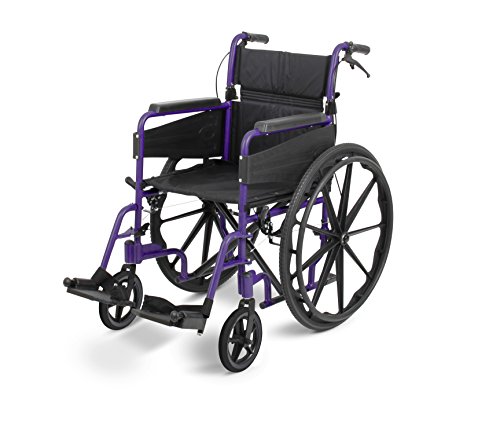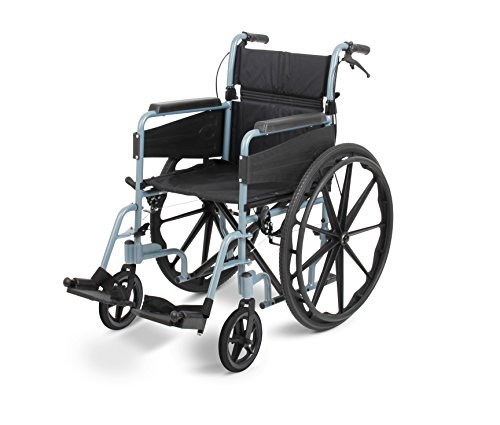Five Killer Quora Answers On How To Self Propel A Wheelchair
작성자 정보
- Alison 작성
- 작성일
본문
 how to self propel a wheelchair to Self Propeller a Wheelchair
how to self propel a wheelchair to Self Propeller a Wheelchairlightest self propelled wheelchair-propelling wheelchairs self propelled can provide a whole new world of independence. It requires a lot of practice and the right body posture to be able to do this.
A proper body position requires precise grip and pushing technique. This article will concentrate on these skills, as well as other aspects of wheelchair propelling.
Hand Positioning
Properly pushing a wheelchair with hands is an important aspect of self-propulsion. Start with precision, then increase speed. By squatting while pushing, you can improve the stability and comfort of users particularly those with upper body restrictions. Hands should be placed in a way that they are aligned with the speed of the wheel. Push with both hands, without placing thumbs on hand-rims. This is a common mistake that reduces efficiency and can increase the force required per stroke.
The recovery path of the hands should be in a comfortable pendular pattern beneath the hand-rims following each propelling cycle, in order to avoid contact with the rear wheels (a "semi-circular" recovery pattern). This helps reduce shoulder strain and also limiting the number of strokes and duration of each stroke to the minimum.
It is sometimes recommended to make long strokes and a full recovery on harder surfaces (like the hand position on a timepiece). This can help to reduce shoulder injuries due to repetitive motion, however it could also increase the load at the shoulders.
Using the same posture for both braking and propelling can also help to minimize shoulder injury. If the user of a wheelchair is able to keep a steady rhythm during both movements it will be much easier to manage the forces applied and to adjust for differences in the terrain.
On slippery or muddy surfaces, it is essential to lean slightly forward when moving to stop the wheels from sinking in the ground and tipping. It is worthwhile to test different extents of trunk lean in order to find the best balance between too little and too much lean. Regular practice will boost your confidence and proficiency. Wheelchair propulsion is a crucial ability for those who have mobility issues. It can unlock a whole new world of independence. With the right approach, the right equipment and a little bit of knowledge anyone can learn how to propel their own manual wheelchair easily! This entry was filed under News and tagged wheelchair.
Foot Positioning
The foot positioning of the user is extremely crucial for stability. It is not recommended to set the feet of a wheelchair too far apart because it makes it difficult for the wheelchair self propelled folding to self-propel. But, in some cases, it is necessary to do so to get over difficult terrain. For example, if the client is going to go down an extremely steep ramp, or even over one of our fantastic National Parks or beaches, then the wheelchair must have wheels that can be pushed up and over them in a way that allows the person to move themselves forwards. The front wheels must be positioned in the manner illustrated below.
When the client has this setup they can grab the wheels' rims and push them in a direction to advance. This requires a lot of upper body strength and is quite difficult to accomplish however it is possible and can allow people who would otherwise not be able to go up or down hills to achieve this.
Wheelies are also important to allow the user to get over obstacles like curbs or people. In this situation the client will put his left foot over the right side to lift themselves over the obstruction. The person will then move their right leg up and over the obstacle, while pushing with their left hand. This is referred to as a crab walk, and it is an effective way of moving a wheelchair over some of our more difficult terrain.
Self-propelled wheelchairs, or manual chairs as they're often referred to, are an excellent solution for many disabled and injured people who want to be able to move around without having to rely on someone else for help. They are lightweight, versatile and foldable to not take up as much space in a home as other mobility aids take up. By utilizing accessories like the E-Motion they can be converted into powerchairs, giving users the freedom to use their chair and the benefit of electrical assistance when needed.
Braking
Self-propulsion in a wheelchair is an essential skill for people who suffer from mobility difficulties. It lets them navigate many kinds of terrains and situations independently. It helps to build strength in the upper arms and shoulders.
To move a wheelchair forward, the user should apply pressure to one hand rim while pulling up on the opposite side. The push-pull motion generates momentum that propels the wheelchair in the direction that is desired. You can adjust the speed of the wheelchair by applying more or lesser pressure to the wheels, or by using hand brakes when they're equipped.
The ideal push cycle should last at least three hours. This will decrease the amount of time that the shoulder is occupied, reducing the risk of injury from repetitive strain. The width and size of the back wheels will affect the speed at which a wheelchair is driven. Smaller wheels are more comfortable to maneuver, whereas larger wheels require more effort. Wheelchairs are also designed with camber, which improves the ease of pushing by aligning the rear wheels with the biomechanics and mechanics of the shoulders and maximizing lateral stability.
Wheelchair users who wish to improve their propulsion technique should concentrate on achieving the correct body position, and practice in a secure environment such as an empty parking lot or hall. The goal is to create long slow strokes, allowing the wheelchair to coast between strokes.
It is also crucial that the user learn to maneuver when moving, such navigating turns or weaving around objects. This can be achieved by weaving around cones and then moving to straight lines. The more you practice, the easier it will be.
easy self-propelled wheelchair wheelchairs are a fantastic tool that can allow people to remain active and still enjoy the activities they used to. They can give autonomy and are a great way to meet new people, go to the movies or even travel. You can regain or maintain your independence by learning how to properly use a chair.
Stability
Self-propelling wheelchairs permit wheelchair users to be self-sufficient and go where they like without relying on others. However, it does take an adequate amount of upper body strength to push the wheels along flat surfaces and even up small hills. This is why many wheelchair users use an attendant controlled chair (also known by the name attendant propelled), such as the Action3 NG, or ErgoLite 2 and are driven.
The act of grasping the hand rims in order to move in a manual wheelchair is among the most important things to master to ensure maximum efficiency and ease. We frequently find that people who are using this type of chair are likely to have their hand rims too far forward, meaning they have to extend further backwards with their arms. This is not a good biomechanical strategy and can lead over time to strain on the shoulders.
The best hand-propulsion pattern is a semicircular one in which the user alternates between the push phase of the wheelchair and the recovery phase. The push phase involves the person pushing down onto the wheels of the wheelchair, which requires many small strokes. This push pattern helps to maintain a healthy range and exercise the shoulder retractor muscle.
When the recovery phase begins the client moves their hands back towards the rims of the wheel until they are in contact with the casters. This allows the user to make several more strokes and minimizes the amount of friction that occurs during the recovery phase. Some wheelchair users slide their hands across the rims in a smooth circular motion during this phase, but this isn't as effective and may create extra wear on the rims.
 The position of the rear wheels for self-propulsion is an additional aspect of stability. If the wheel is too far forward, then a person could slide off their wheelchair with ease. This can be difficult for them to maneuver around obstacles and it's not a good idea to risk shoulder injuries. In order to determine which wheel is best self propelled wheelchair uk for a particular client we must assess their strength, range-of-motion, muscle tone, health status of their spine and other aspects during the seat assessment.
The position of the rear wheels for self-propulsion is an additional aspect of stability. If the wheel is too far forward, then a person could slide off their wheelchair with ease. This can be difficult for them to maneuver around obstacles and it's not a good idea to risk shoulder injuries. In order to determine which wheel is best self propelled wheelchair uk for a particular client we must assess their strength, range-of-motion, muscle tone, health status of their spine and other aspects during the seat assessment. 관련자료
-
이전
-
다음
댓글 0
등록된 댓글이 없습니다.
